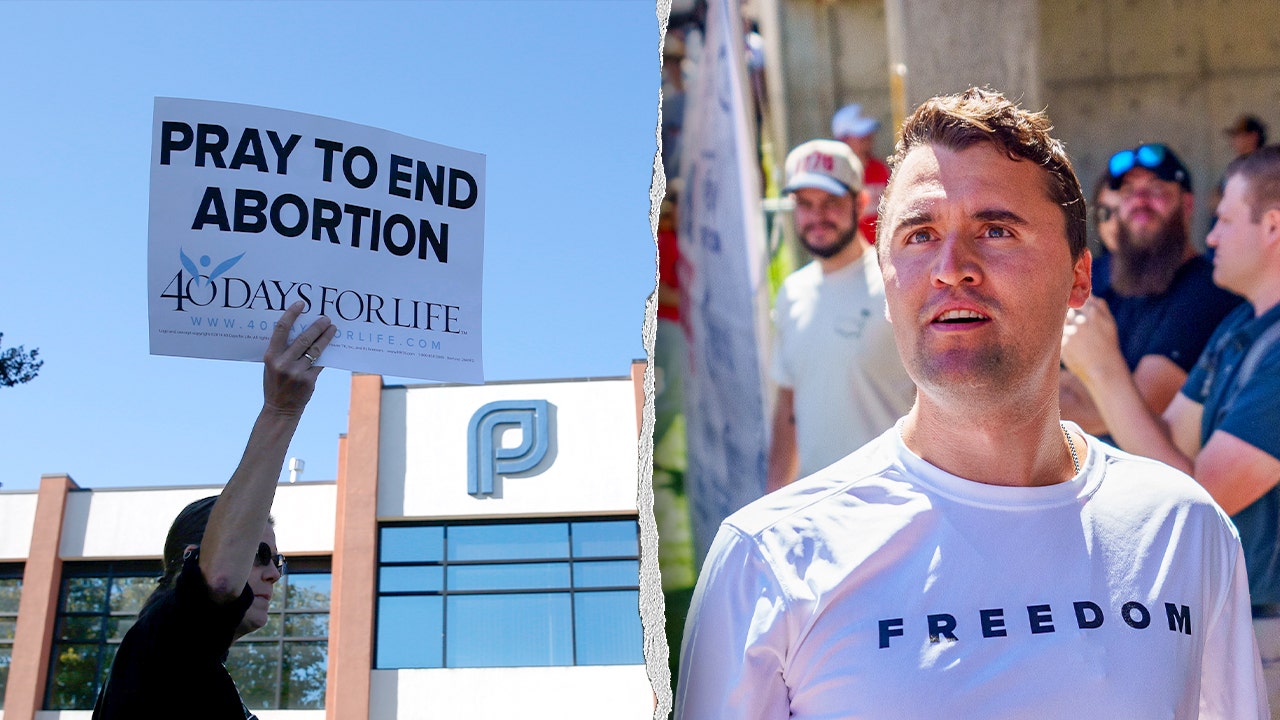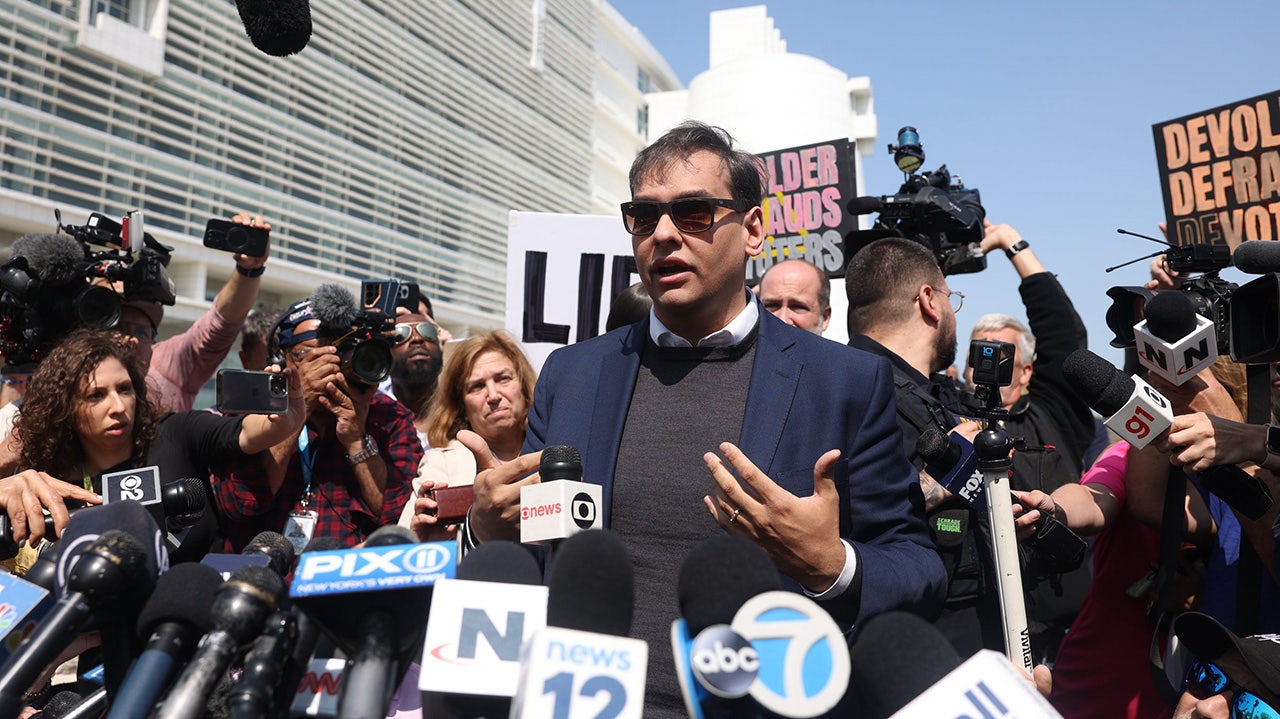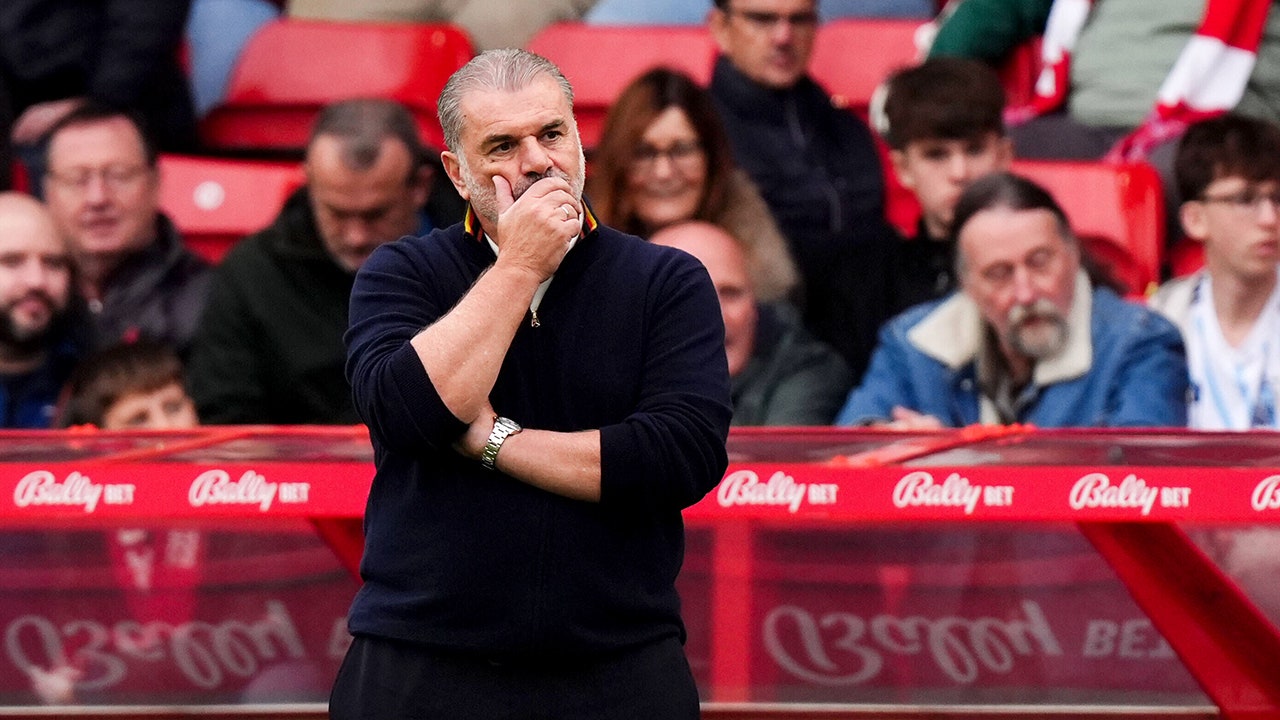World
Hamas defends executions of Palestinians after Trump issues stern warning to terror group
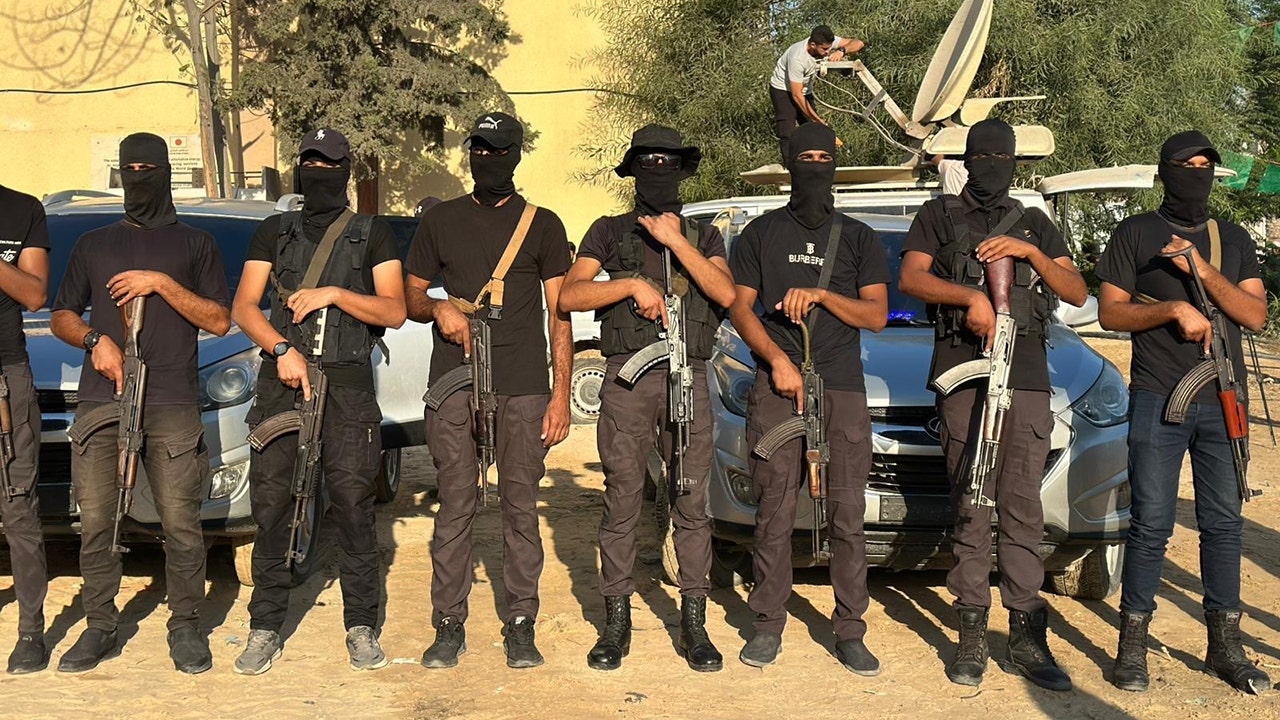
NEWYou can now listen to Fox News articles!
FIRST ON FOX: As a senior Hamas official defended the group’s crackdown on Palestinians in Gaza on Friday in an interview with Reuters, a Gazan lawyer in hiding from the terrorists warned that the killings of the group’s critics are continuing.
In an exclusive interview from Gaza, Moumen Al-Natour, a lawyer, former Hamas political prisoner and president of Palestinian Youth for Development, said Hamas resurfaced from underground tunnels after the ceasefire. “After the fire stopped, Hamas fighters came out of the tunnels and massacred families that opposed them,” he said. “They are sending a signal that they are back — by terrorizing people.”
In defending the executions, the Hamas terrorist official, Mohammed Nazzal, told Reuters on Friday that there were always “exceptional measures” during the war and those executed were criminals guilty of killing.
HAMAS ACCEPTS TRUMP PEACE PLAN ENDING 2 YEARS OF WAR IN GAZA, RETURNING HOSTAGES
A group of Hamas gunmen in Deir-el Balah in central Gaza as 20 living Israeli hostages were freed on Oct. 13, 2025. (Photos by TPS-IL)
On Thursday, President Donald Trump issued a warning on Truth Social after footage circulated online showing Hamas fighters executing Palestinians in Gaza City’s main square. “If Hamas continues to kill people in Gaza, which was not the deal, we will have no choice but to go in and kill them,” he wrote.
According to Reuters, at least 33 people were executed by Hamas in recent days in what officials described as a campaign to “show strength” after the ceasefire. Israeli sources say most of those killed belonged to families accused of collaborating with Israel or supporting rival militias.
Al-Natour, the co-founder of the “We Want To Live Movement,” said several local militias are still resisting the group across Gaza. In Rafah, the Abu Shabab clan has drawn attention for recruiting fighters and resisting Hamas’s control. In Gaza City, the Doghmush clan has clashed repeatedly with Hamas terrorists. In Khan Younis, the Mujaida clan has also been involved in armed confrontations.
Some members tied to the Hellis network in Gaza City are operating in neighborhoods under tension with Hamas. These factions do not hold stable territory, but their sporadic resistance — from raids to armed standoffs — signals the first cracks in Hamas’s grip.
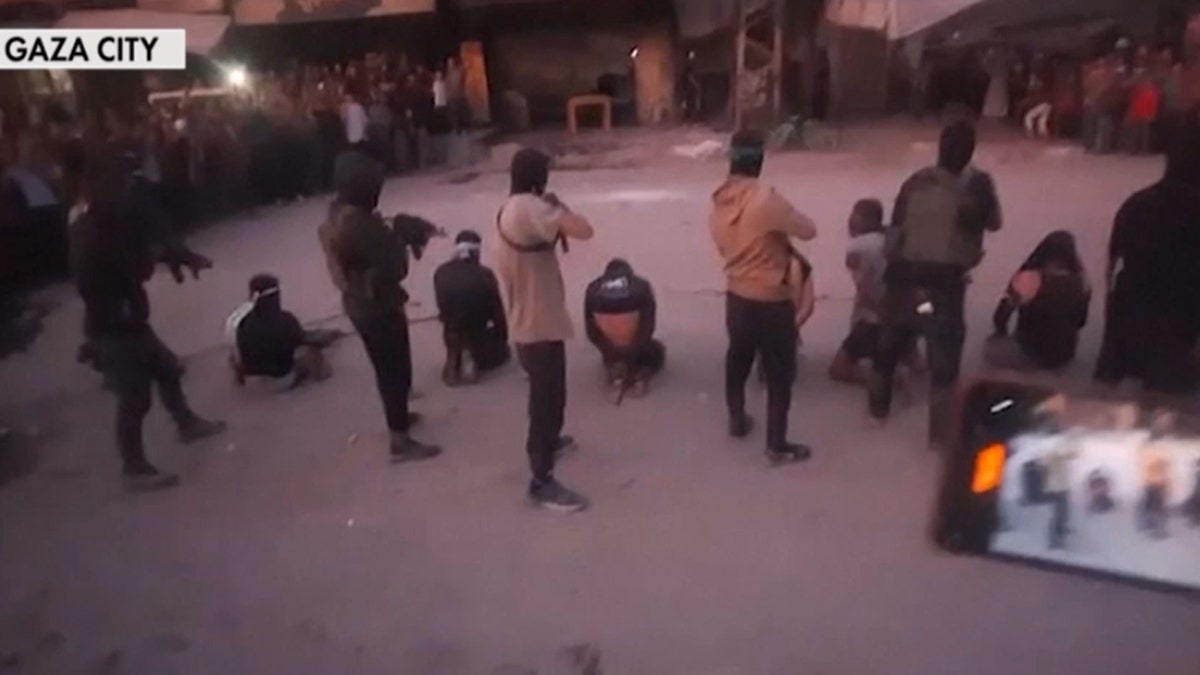
In this still from a verified social media video confirmed to Reuters by a Hamas source, seven men are forced to their knees and shot from behind by Hamas terrorists during public executions in Gaza on Oct. 14, 2025. (Reuters)
“These militias come from the population,” Al-Natour said. “They need recognition and coordination to form a political umbrella — a transitional body that governs these areas and organizes their security.”
BBC REPORT FINDS GAZA DOCUMENTARY NARRATED BY HAMAS TERRORIST’S SON BREACHED EDITORIAL STANDARDS
He said he and others are trying to operate under what he called Trump’s peace framework, forming safe zones inside Gaza where civilians unaffiliated with Hamas can access food, aid, and protection. “We can build a governing body in these zones,” he said. “But those of us who speak out are hunted. The people Hamas is killing now are just like me — Palestinians who dared to speak.”
Joseph Braude, president of the Center for Peace Communications, said Hamas is using the post-war lull to settle old scores. “It’s a dark time for Hamas’s many opponents in Gaza,” he told Fox News Digital. “They’re exploiting this moment to reassert dominance through brute force. They killed a pregnant woman about 18 hours ago. It is indiscriminate killing designed simply to sow fear in ordinary people”
His organization released a video on X featuring an interview with a Gazan who described how Hamas killed a 5-year-old child as part of its campaign against opponents.
TRUMP UNVEILS 20-POINT PLAN TO SECURE PEACE IN GAZA, INCLUDING GRANTING SOME HAMAS MEMBERS ‘AMNESTY’
Braude described Gaza’s reality as bifurcated. Reconstruction, he explained, could begin in the areas behind the yellow line — territory now under Israeli supervision — while fighting continues elsewhere. “This is the scenario envisioned in the 20-point plan,” he said. “Gazans opposed to Hamas, including those who have taken up arms in that struggle, can help form enclaves of self-rule that evolve into a transitional authority with international support.”
He predicted that a coalition of anti-Hamas militias, supported by air cover from Israel and possibly private contractors, will carry out the remaining ground battles. “There is no conceptual return to the pre-Oct. 7 approach,” he added.
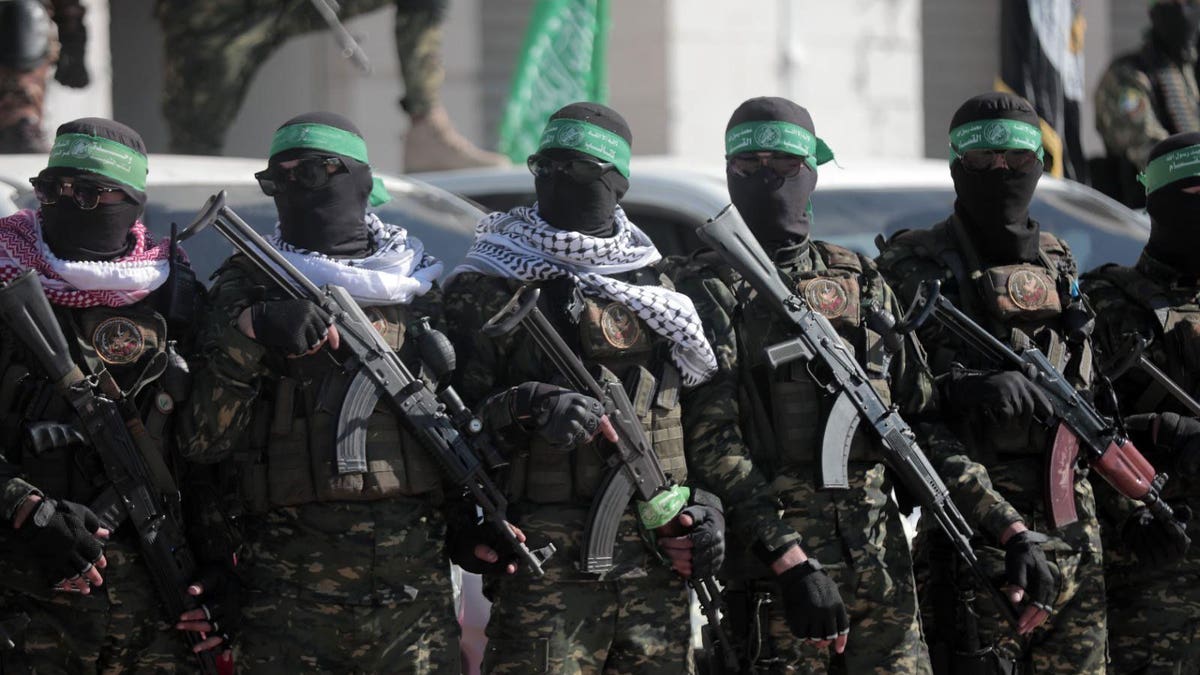
A military parade of the Hamas terrorist organization before the transfer of four Israeli female hostages to the Red Cross on January 25th, 2025. (TPS-IL)
Michael Milshtein, head of the Palestinian Studies Forum at Tel Aviv University and a former IDF intelligence officer, said Hamas has seized the clans’ weapons and money, much of it originating from Israel, drawing parallels to Hezbollah’s takeover of southern Lebanon in 2000. “This leaves Israel in a dilemma,” he warned. “If the Israeli military ends up protecting these clans, we risk starting another war with Hamas. If we abandon them, we may have to absorb them later, like the allies we evacuated from Lebanon.”
He called the initiative “a tragic example of acting without understanding Gaza’s reality.”
Gazans who spoke anonymously to Fox News Digital described chaos and fear. One man said “gangs are in the streets” and warned that another internal war could erupt. Another said, “No one knows who will rule or what will happen next. We just want to live without bloodshed.”
Trump’s team has framed the Gaza ceasefire as the foundation for lasting peace. But with executions, clan wars, and new militias emerging, officials and residents alike say the post-war phase may test whether that peace can hold — or whether Gaza is entering yet another cycle of terror and revenge.
Reuters contributed to this report.

World
Tunnel connecting Belarus and Poland discovered by border guards
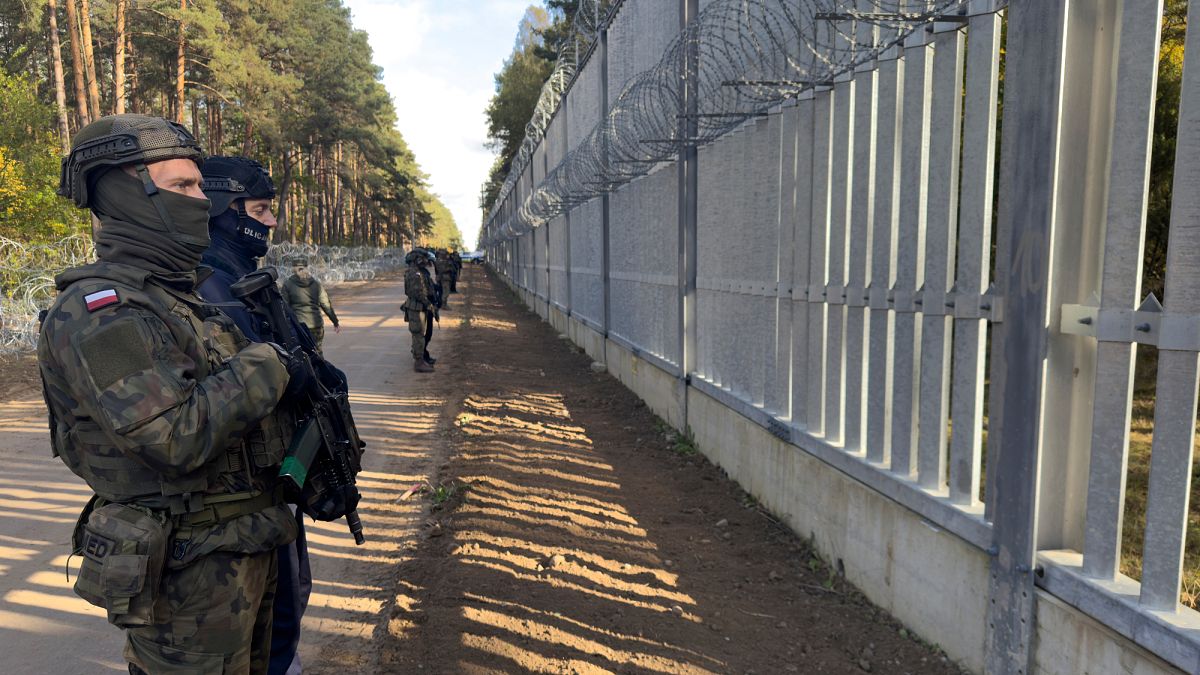
ADVERTISEMENT
Polish border guard officers discovered a tunnel connecting the Belarusian side of the border with Poland on Friday. Warsaw’s Minister of Interior and Administration Marcin Kierwiński provided information about the revealed tunnel in a post on social media platform X.
“Officers of the [Podlaskie Border Guard – ed.] discovered a tunnel under the barrier on the Polish-Belarusian border. The tunnel started and ended about 20 meters from the border on the side. Thanks to advanced electronic systems on the barrier, the Polish-Belarusian border is effectively protected!” wrote the head of the Ministry of Interior and Administration.
This is the second tunnel dug under the Polish-Belarusian border that has been discovered this year. The first one was located in the area of the Border Guard Station in Narewka.
Both tunnels were detected using “advanced electronic systems” recently installed in the area, according to local officials.
In July, a significant section of the Polish-Belarusian border was modernised, installing the most advanced and modern thermal cameras.
The Podlaskie Border Guard also reported that more than 60 attempts to illegally cross the Polish-Belarusian border were recorded on Thursday.
26,700 illegal border crossing attempts since January
Since January 2025, Border Guard officers have recorded over 26,700 attempts to illegally cross this border.
The Polish-Belarusian border has been at the centre of a migration and humanitarian crisis on the eastern flank of the European Union since 2021.
The government claims this is part of a broader “hybrid warfare” strategy aimed at destabilising the region.
Poland and its allies have accused the Belarusian government of provoking the crisis by bringing migrants from the Middle East and Africa to Belarus and transporting them to the Polish border.
For years, Poland has faced criticism from human rights organisations for its response to illegal border crossing attempts. These critics particularly highlighted the alleged use of the “pushback” method to send migrants back to Belarus without allowing them to apply for asylum.
World
US sanctions ex-police officer, gang leader in Haiti over criminal ties

The United States Treasury has sanctioned two Haitians, one a former police officer and the other an alleged gang leader, for their affiliation with the Viv Ansanm criminal alliance.
On Friday, a Treasury news release accused Dimitri Herard and Kempes Sanon of colluding with Viv Ansanm, thereby contributing to the violence wracking Haiti.
list of 3 itemsend of listRecommended Stories
The sanctions block either person from accessing assets or property in the US. They also prohibit US-based entities from engaging in transactions with the two men.
“Today’s action underscores the critical role of gang leaders and facilitators like Herard and Sanon, whose support enables Viv Ansanm’s campaign of violence, extortion, and terrorism in Haiti,” Bradley T Smith, the director of the US Office of Foreign Assets Control, said in a statement.
Since taking office for a second term, US President Donald Trump has sought to take a hardline stance against criminal organisations across Latin America, blaming the groups for unregulated immigration and drug-trafficking on US soil.
Trump has termed their actions a criminal “invasion”, using nativist rhetoric to justify military action in international waters.
Viv Ansanm has been part of Trump’s crackdown. On his first day in office, on January 20, Trump issued an executive order setting the stage for his administration to label Latin American criminal groups as “foreign terrorist organisations”.
That process began several weeks later. In May, Viv Ansanm and another Haitian criminal organisation, Gran Grif, were added to the growing list of criminal networks to receive the “foreign terrorist” designation.
Since the assassination of Haitian President Jovenel Moise in 2021, a power vacuum has formed in Haiti. The last national elections were held in 2016, and its last democratically elected officials reached the end of their terms in 2023.
That has created a crisis of public confidence that criminal networks, including gangs, have exploited to expand their power. Viv Ansanm is one of the most powerful groups, as a coalition of gangs largely based in the capital, Port-au-Prince.
In July, Ghada Waly, the executive director of the United Nations Office on Drugs and Crime, warned that the gangs now have “near-total control of the capital”, with 90 percent of its territory under their control.
Nearly 1.4 million people have been displaced in the country as a result of the gang violence, a 36 percent increase over 2024. Last year, more than 5,600 people were killed, and a further 2,212 injured.
In Friday’s sanctions, the US Treasury accused Herard, the former police officer, of having “colluded with the Viv Ansanm alliance”, including through training and the provision of guns.
It also noted that Herard had been imprisoned by Haitian authorities for involvement in the Moise assassination. He later escaped in 2024.
Sanon, meanwhile, is identified as the leader of the Bel Air gang, part of the Viv Ansanm alliance. The Treasury said he “played a significant role” in building Viv Ansanm’s power, and it added that he has been implicated in killings, extortion and kidnappings.
The UN Security Council echoed the US’s sanctions against Sanon and Herard, designating both men on Friday. It also agreed to extend its arms embargo on Haiti, which began in 2022.
In September, the UNSC also approved the creation of a “gang suppression force”, with a 12-month mandate to work with Haitian police and military. That force is expected to replace a Kenyan-led mission to reinforce Haiti’s security forces, and it is slated to include 5,550 people.
But on Friday, the Trump administration said that the UN had not gone far enough in its efforts to combat Haiti’s gangs. It called for more designations against individual suspects.
“While we applaud the Council for designating these individuals, the list is not complete. There are more enablers of Haiti’s insecurity evading accountability,” an open letter from US Ambassador Jennifer Locetta read.
“Haiti deserves better. Colleagues, we will continue pressing for more designations through the Security Council and its subsidiary bodies to ensure the sanctions lists are fit for purpose.”
World
Video: We Investigated Assad’s Fugitive Henchmen

new video loaded: We Investigated Assad’s Fugitive Henchmen

By Haley Willis, Christiaan Triebert, Rebecca Suner, James Surdam, Joey Sendaydiego, David Seekamp, Gabriel Blanco and Sutton Raphael
October 16, 2025
-
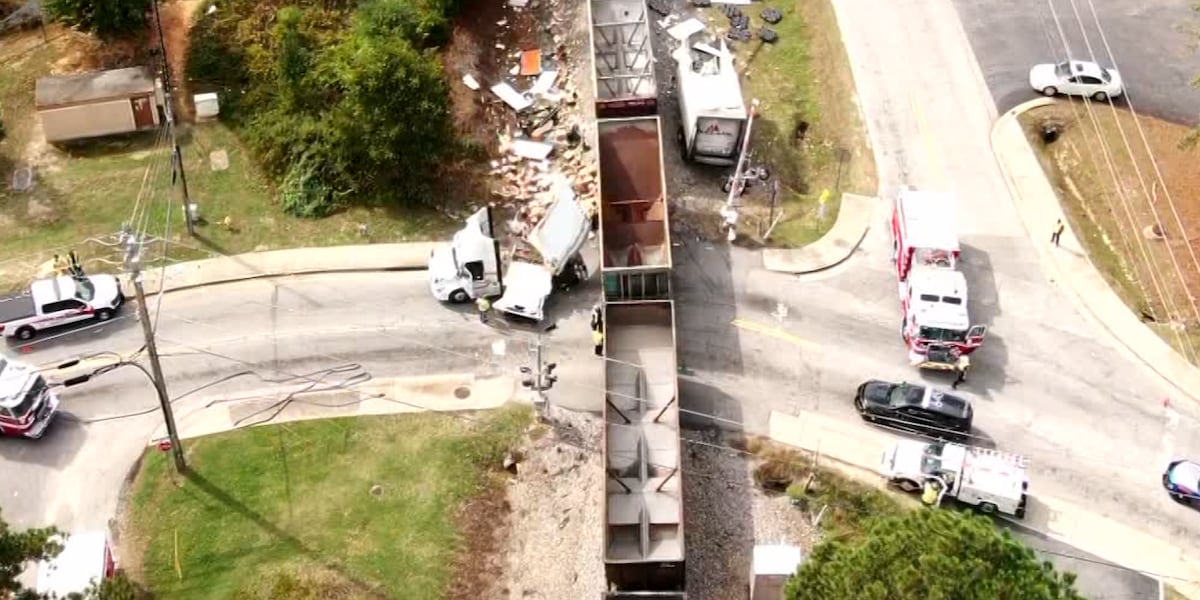
 Augusta, GA1 week ago
Augusta, GA1 week ago‘Boom! Blew up right there’: Train slams into semi in Grovetown
-

 Alaska4 days ago
Alaska4 days agoMore than 1,400 seeking shelter as hundreds wait to be evacuated after catastrophic Western Alaska storm, officials say
-

 Education1 week ago
Education1 week agoVideo: 3 Former College Teammates Reunite on Rangers Coaching Staff
-
Business1 week ago
Los Angeles Times Media Group takes step to go public
-

 Wisconsin1 week ago
Wisconsin1 week agoAppleton Public Library wins 2025 Wisconsin Library of the Year award for distinguished service
-

 Vermont1 week ago
Vermont1 week agoFeds: Springfield dealer ran his drug business from Vermont jail
-
Virginia1 week ago
Match 13 Preview: #8 Virginia
-
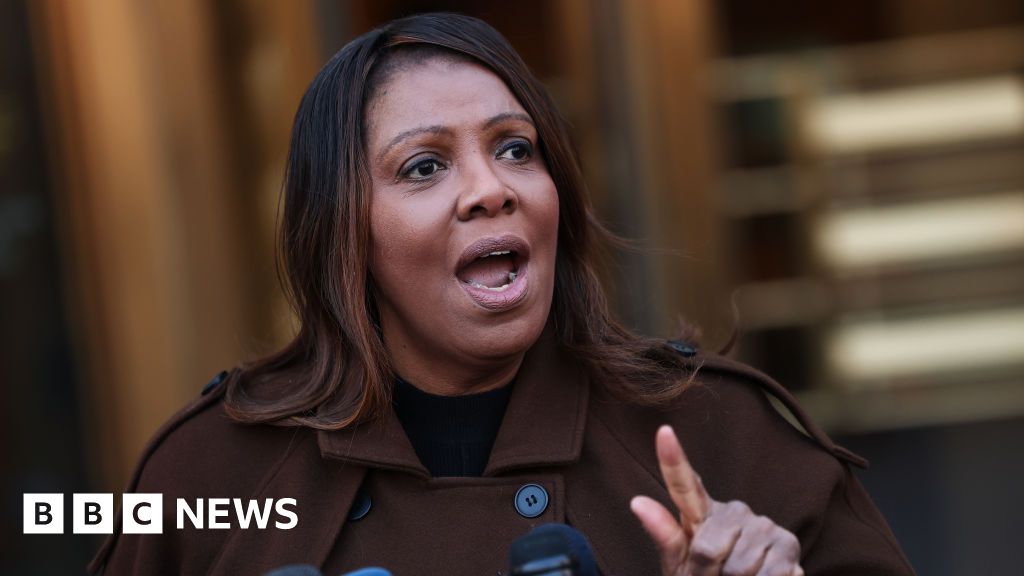
 News1 week ago
News1 week agoWhat we know about the charges against New York’s Attorney General Letitia James
